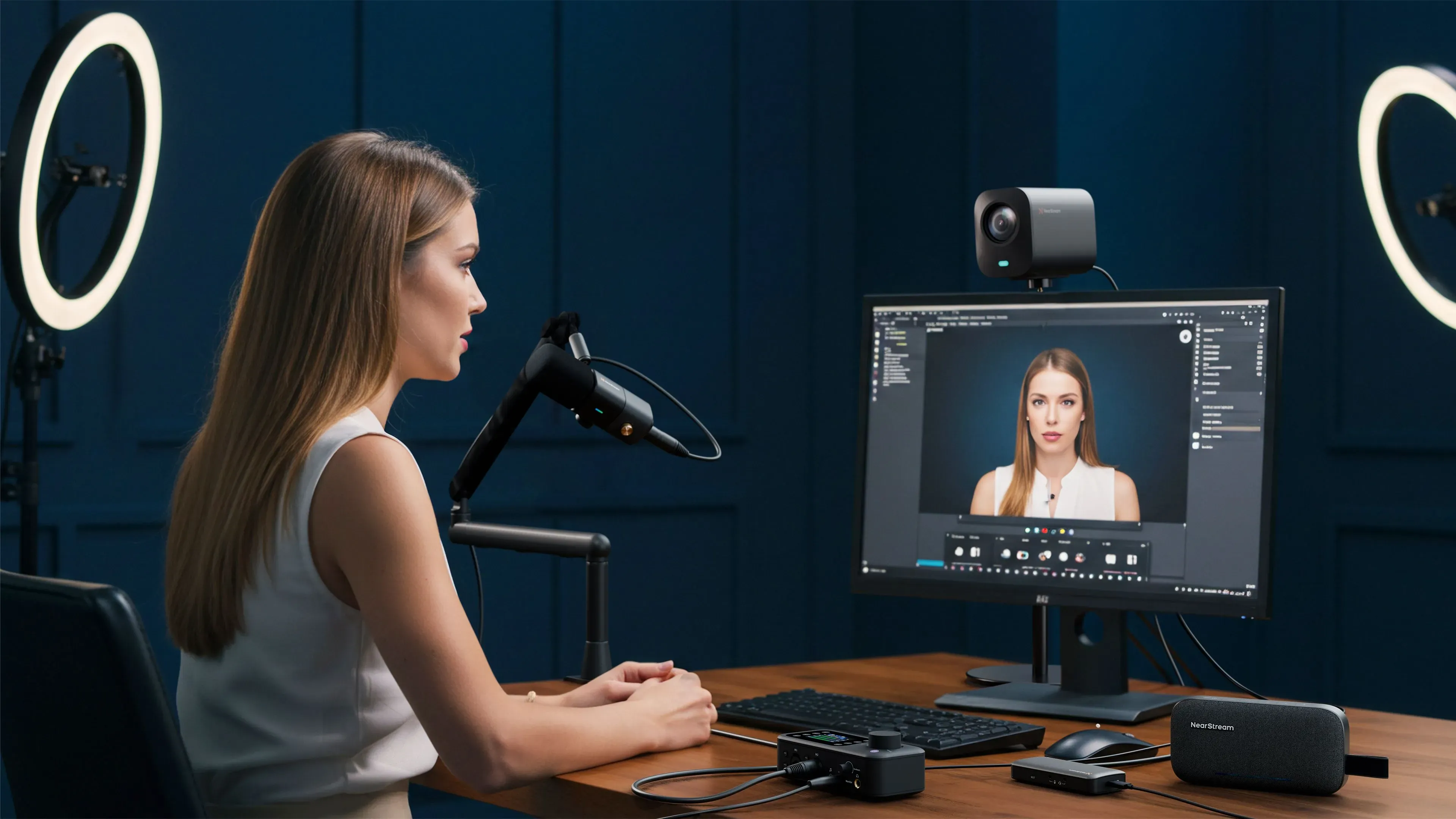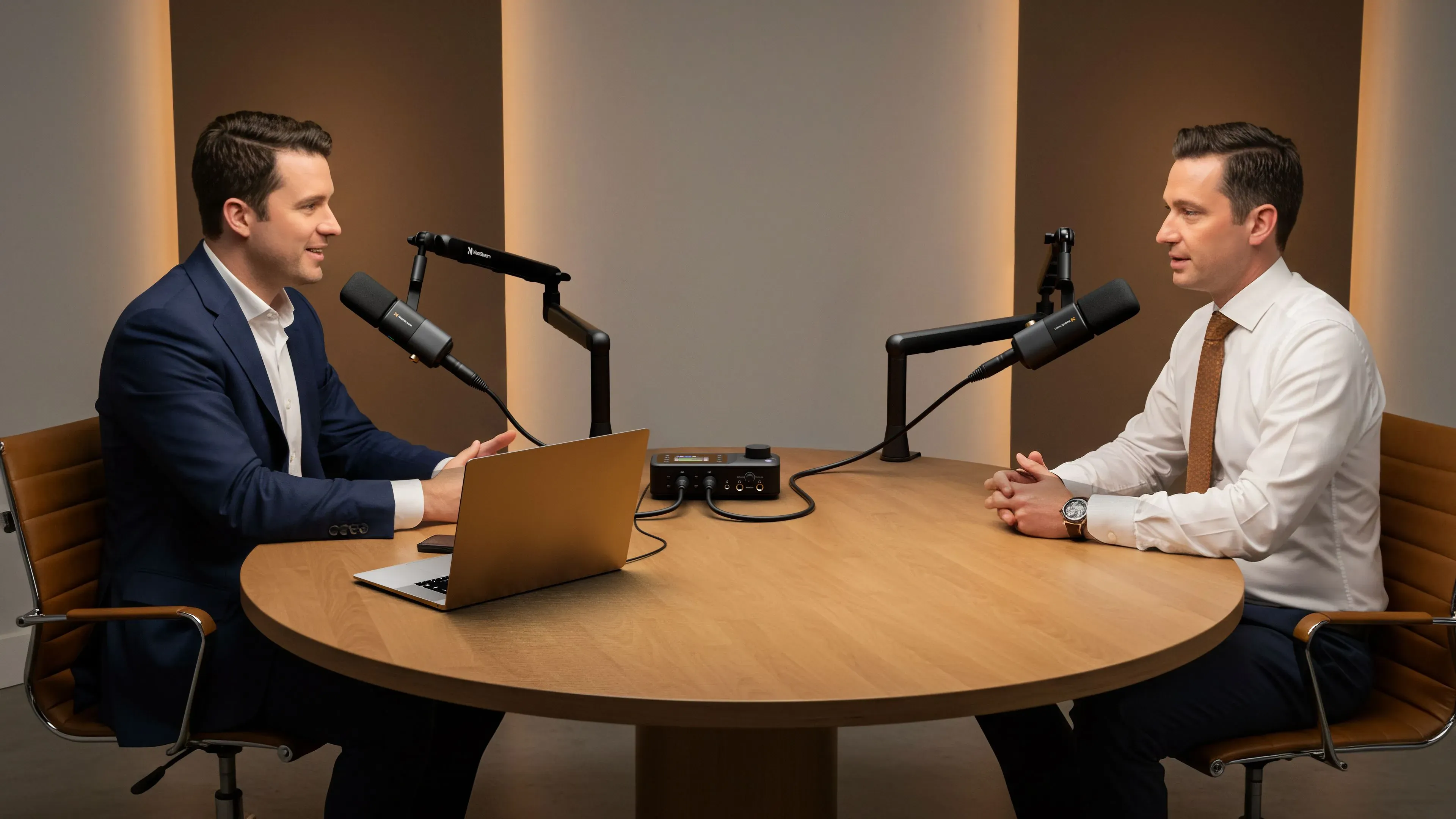Podcasting is becoming more popular as a fun and easy way to share ideas, stories, and information. Whether you want to start a personal podcast or build a brand, having the right podcasting kit is important for clear sound and a smooth recording process. Good equipment helps you avoid common audio issues and makes your podcast more professional. This guide is perfect for beginners, content creators, and aspiring podcasters who want to start with the right tools and create great content.
What Is a Podcast Starter Kit?
A podcasting kit is a set of equipment needed to record a podcast. It usually includes a microphone, headphones, an audio interface or mixer, and recording software. Having a complete podcast starter kit is essential for beginners because it makes recording easier and improves sound quality. Without the right tools, podcasts may have background noise or unclear audio. There are different types of podcasting kits: solo kits for one person, duo kits for two people, and multi-person kits for group discussions. A solo kit is simple and easy to use, while a duo or multi-person starter kit requires extra microphones and an audio interface with multiple inputs. Choosing the right starter podcast kit depends on your needs, budget, and podcast format. A good setup helps you create professional and engaging content.

Essential Components of a Podcasting Kit
To create a high-quality podcast, you need the right equipment for podcast starter kit. Here are the essential components of a podcasting kit:
A. Microphone
- Dynamic vs. Condenser Microphones: Dynamic microphones are durable and reduce background noise, making them great for home studios. Condenser microphones capture more detail but can pick up background noise easily.
- USB vs. XLR Microphones: USB microphones are easy to use—just plug and play. XLR microphones offer better sound quality but require an audio interface.
B. Audio Interface or Mixer
- Difference: An audio interface connects your XLR microphone to your computer, converting sound into digital format. A mixer offers more control over sound levels and effects.
- Why You Need One: If you're using XLR microphones, an audio interface or mixer is necessary for professional-quality audio.
C. Headphones
- Why They Are Important: Headphones help you monitor your audio while recording, so you can hear background noise or volume issues.
- Closed-Back vs. Open-Back: Closed-back headphones block outside noise, making them ideal for recording. Open-back headphones offer natural sound but may pick up external noise.
D. Recording Software (DAW)
- Free vs. Paid Software: Free options like Audacity and GarageBand are great for beginners, while paid software like Adobe Audition and Reaper offer advanced features.
- Popular Choices: Audacity (free and beginner-friendly), GarageBand (for Mac users), and Reaper (affordable and professional).
E. Other Accessories
- Pop Filter & Windscreen: Reduce plosive sounds (like "p" and "b" sounds) for clearer audio.
- Mic Stand & Boom Arm: Keep your microphone steady and positioned correctly.
- Soundproofing & Acoustic Treatment: Helps reduce echo and background noise for better recording quality.
With the right podcasting kit, you can create professional, high-quality content easily!
Recommended Podcasting Kits for Beginners
Starting a podcast is easier when you have the right equipment. Depending on how many people will be speaking, you need a different starter podcasting kit. Here are three great options for beginners.
| Kit | Best for | Pros | Recommended Kits |
| Solo Kit | One-person podcasts (interviews, storytelling, and personal content) | Easy to set up, budget-friendly | RØDE NT-USB Mini Podcast Kit, Nearstream Podpro Solo |
| Duo Kit | Two-person podcasts (co-hosted podcasts, interviews, and discussions) | Better sound quality, needs an interface | Focusrite Scarlett 2i2 Podcast Kit, Nearstream Podpro Duo, RODE RODECaster Pro II 2-Person Podcasting Kit |
| Quad Kit | Four-person podcasts (roundtable discussions, panel talks, and team-based podcasts) | Supports multiple mics, professional sound | Zoom PodTrak P8 Four-Person Podcast Value Kit, Nearstream Podpro Quad, RODE RODECaster Pro II 4-Person Podcasting Kit |
Comparison of popular podcast kits on the market
| Kit | Best for | Key Features | Price |
| RØDE NT-USB Mini Podcast Kit | One-person podcasts (interviews, storytelling, and personal content) |
| $158.98 |
| Nearstream Podpro Solo | One-person podcasts (interviews, storytelling, and personal content) |
| $578.70 |
| Focusrite Scarlett 2i2 Podcast Kit | Two-person podcasts (co-hosted podcasts, interviews, and discussions) |
| $299.99 |
| Nearstream Podpro Duo | Two-person podcasts (co-hosted podcasts, interviews, and discussions) |
| $1111.95 |
| RODE RODECaster Pro II 2-Person Podcasting Kit | Two-person podcasts (co-hosted podcasts, interviews, and discussions) |
| $1,472.97 |
| Zoom PodTrak P8 Four-Person Podcast Value Kit | Four-person podcasts (roundtable discussions, panel talks, and team-based podcasts) |
| $1,758.94 |
| Nearstream Podpro Quad | Four-person podcasts (roundtable discussions, panel talks, and team-based podcasts) |
| $2223.90 |
| RODE RODECaster Pro II 4-Person Podcasting Kit | Four-person podcasts (roundtable discussions, panel talks, and team-based podcasts) |
| $3,307.99 |
How to Choose the Best Podcasting Kit for Your Needs
Choosing the right starter podcasting kit can be tricky, but focusing on a few key factors can help you make the best decision.
Factors to Consider
- Budget: If you're just starting, a budget-friendly USB microphone is a great choice. If you have more to invest, an XLR setup offers better sound quality.
- Portability: Need to record on the go? A lightweight USB microphone is more convenient than a full XLR setup with an audio interface.
- Recording Environment: If you record in a quiet room, a condenser microphone captures more detail. If you have background noise, a dynamic microphone is a better option.
Tips for Upgrading Your Kit
- Start with a USB mic, then upgrade to an XLR setup as you grow.
- Add a mixer for more sound control.
- Improve audio quality with pop filters, mic stands, and soundproofing.
The right kit helps you create professional podcasts at any stage of your journey!
Setting Up Your Podcasting Kit – Step-by-Step Guide
Starting your podcast is exciting, but setting up your equipment correctly is key to getting great sound quality. Follow these simple steps to get started!
1. Assembling the Equipment
- Set up your microphone on a stand or boom arm for stability.
- Connect a USB mic directly to your computer or plug an XLR mic into an audio interface.
- Wear headphones to monitor your sound while recording.
- Open your recording software (DAW) like Audacity or GarageBand.
2. Adjusting Audio Levels and Mic Placement
- Place the microphone 6–12 inches away from your mouth.
- Adjust the gain (volume control) on your audio interface or software to avoid distortion.
- Speak at a steady volume and use a pop filter to reduce harsh sounds.
3. Testing and Troubleshooting Common Issues
- Check connections: Ensure cables are properly plugged in.
- Test audio levels: Record a short sample to check for background noise or low volume.
- Reduce echo: Use soundproofing like foam panels if needed.
- Fix distortion: Lower the gain if your voice sounds too loud or unclear.
With the right setup, you’ll get clear, professional-quality recordings for your podcast!

Final Tips for Starting Your Podcast
Here are a few key tips that can help you create high-quality episodes and grow your audience.
1. Recording Tips for Professional-Quality Sound
- Record in a quiet room to avoid background noise.
- Speak clearly and at a steady pace for better audio quality.
- Use a pop filter to reduce harsh sounds like "p" and "b" sounds.
2. Importance of Post-Production and Editing
- Edit your audio to remove mistakes, background noise, and long pauses.
- Use free tools like Audacity or GarageBand for basic editing.
- Add music and sound effects to make your podcast more engaging.
3. Hosting Platforms and Where to Publish Your Podcast
- Use hosting platforms like Buzzsprout, Anchor, or Podbean to upload your podcast.
- Distribute your podcast on Spotify, Apple Podcasts, Google Podcasts and YouTube to reach more listeners.
With the right setup and these tips, you’re ready to launch your podcast and share your voice with the world!
Final Thoughts
Starting a podcast may seem challenging, but with the right podcast starter kit, you can create high-quality content easily. Don’t wait for everything to be perfect—just start recording and improve along the way! Hope this blog could help you start your podcast kit.




































































